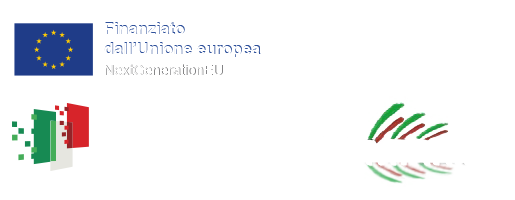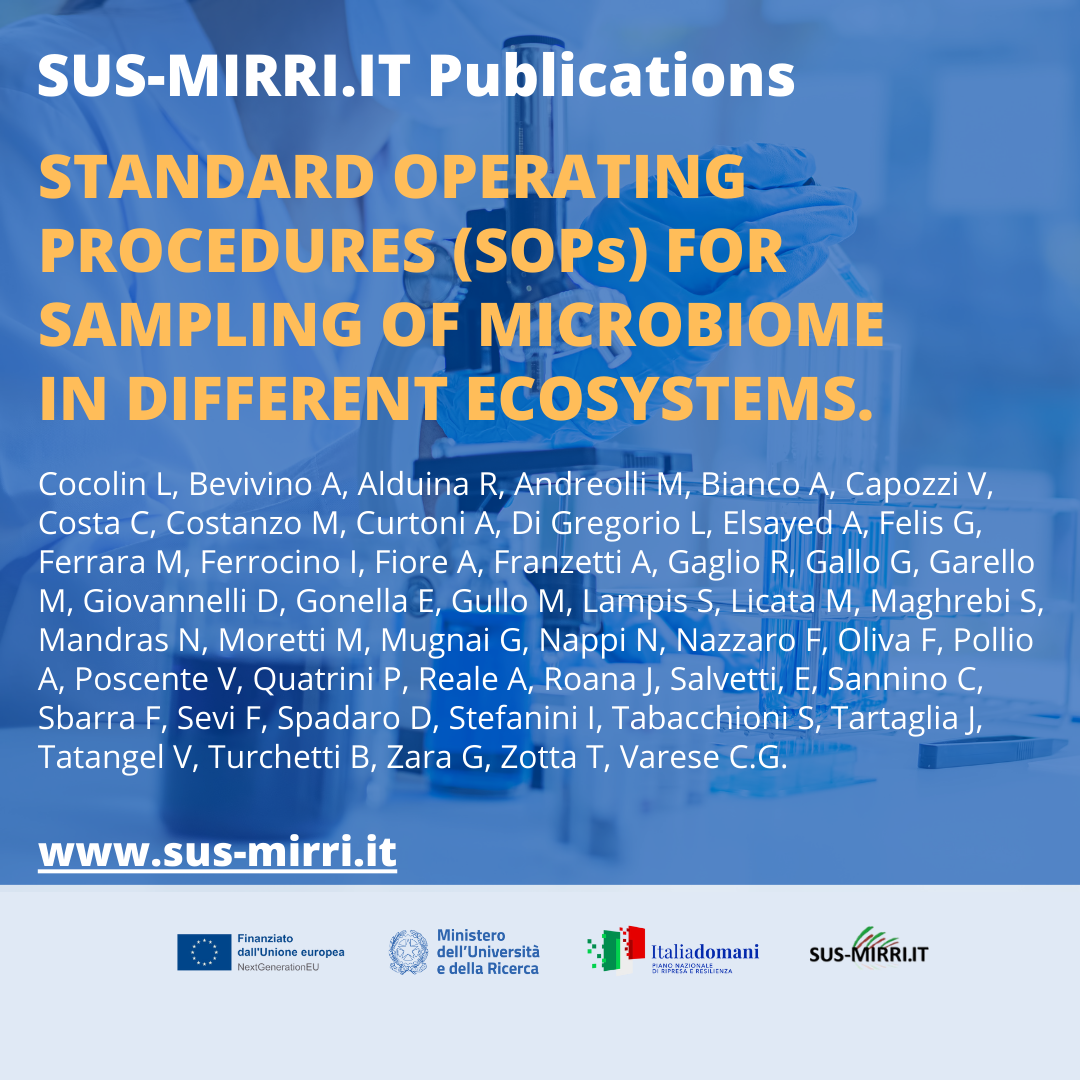Cocolin L, Bevivino A, Alduina R, Andreolli M, Bianco A, Capozzi V, Costa C, Costanzo M, Curtoni A, Di Gregorio L, Elsayed A, Felis G, Ferrara M, Ferrocino I, Fiore A, Franzetti A, Gaglio R, Gallo G, Garello M, Giovannelli D, Gonella E, Gullo M, Lampis S, Licata M, Maghrebi S, Mandras N, Moretti M, Mugnai G, Nappi N, Nazzaro F, Oliva F, Pollio A, Poscente V, Quatrini P, Reale A, Roana J, Salvetti, E, Sannino C, Sbarra F, Sevi F, Spadaro D, Stefanini I, Tabacchioni S, Tartaglia J, Tatangel V, Turchetti B, Zara G, Zotta T, Varese C.G. (2023). STANDARD OPERATING PROCEDURES (SOPs) FOR SAMPLING OF MICROBIOME IN DIFFERENT ECOSYSTEMS. Zenodo. https://zenodo.org/records/10887823
In 2022, the project SUS-MIRRI.IT “Strengthening the MIRRI Italian Research Infrastructure for Sustainable Bioscience and Bioeconomy” was launched as part of the actions oriented towards Italy’s membership of MIRRI-ERIC, the pan-European distributed Research Infrastructure for the preservation, systematic investigation, provision and valorization of microbial resources and biodiversity. The project SUS-MIRRI.IT, funded by Italy’s National Recovery and Resilience Plan – PNRR, is granted by the European Commission’s “NextGenerationEU” program with a total budget of about 17M €. The main objective of SUS-MIRRI.IT is to implement the network of microbial biobanks distributed throughout Italy to increase the benefit(s) that society can derive from the knowledge and valorization of microbial biodiversity, which is a critical asset to face several of the greatest social, economic, and environmental challenges characterizing our time.
The project intends to:
- implement the network of microbial Culture Collection (CCs) by setting up high-standard operative procedures and quality management;
- equipe microbial CCs with cutting-edge laboratory facilities;
- provide more in-depth characterization of microbiomes and individual organisms stored in the CCs as well as identify better long-term preservation methods;
- create the Italian integrated catalogue of microorganisms and their associated metadata;
- set up a single-entry point virtual platform to promote the microbial resources, services, technologies, expertise, training courses, transfer of knowledge activities provided by the Italian CCs;
- strengthen both connections with stakeholders and synergies with other Research Infrastructures at regional, national and international levels;
- develop services and training courses for Academia and Bioindustry.
Microbiomes are defined as a characteristic microbial community (microbiota) occupying a certain habitat (the so-called theater of activity) and exhibiting distinct and emergent physicochemical properties. Recently, several studies showed that microbiomes represent innovative and frontier tools to address current and future problems in the areas of agriculture, environment, food production, and animal and human health.
However, despite this amazing potential of microbiomes, there is a huge gap to be filled in terms of how microbiomes are sampled, characterized, safely stored, and then cultured for further applications.
In addition, the lack of standardization in the processes of sampling, extraction of genetic material, execution of -omics technologies, and bioinformatic analyses has resulted in the limited possibility of data comparison.
Therefore, in the absence of international standards, the purpose of Work Package 4 of the SUS-MIRRI.IT project is to contribute to the definition and validation of microbiome quality standards to be applied globally in different scientific areas. Specifically, Standard Operating Procedures (SOPs) for sampling different ecosystems (which are: fermented solid and liquid foods, human feces, soil/plant environment, insects, water, and sediments) and the subsequent DNA extraction steps have been developed in this document. To properly construct the promised SOPs, the different research units participating in the WP4 gathered relevant information from their own experience/published articles or the available literature to create a solid body of knowledge, based on which to prepare SOPs.
Here, we are thus providing different protocols with a homogeneous and consistent structure organization for the isolation and subsequent analysis of microbiome materials from different matrices. A total of 13 SOPs were created, specifically, 6 for sampling and 7 for DNA extraction.
Go to the publication: https://zenodo.org/records/10887823



